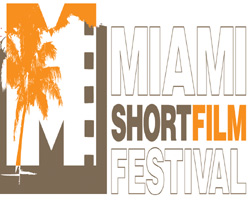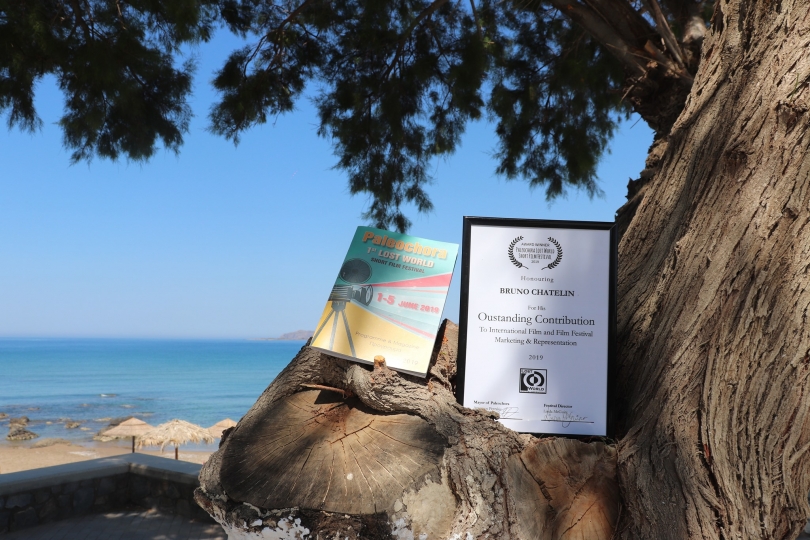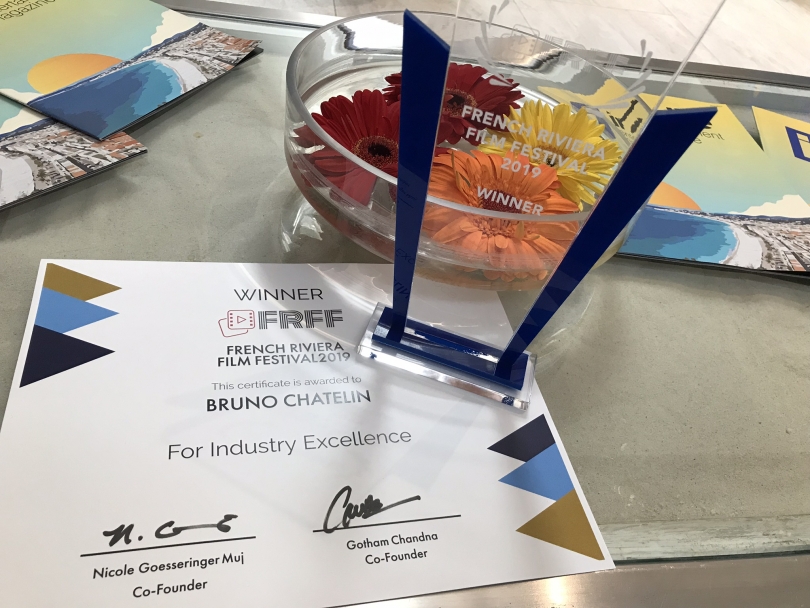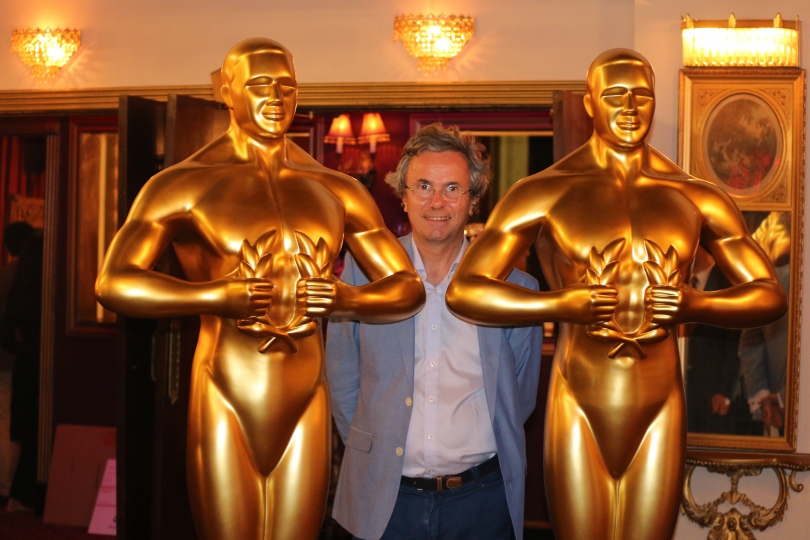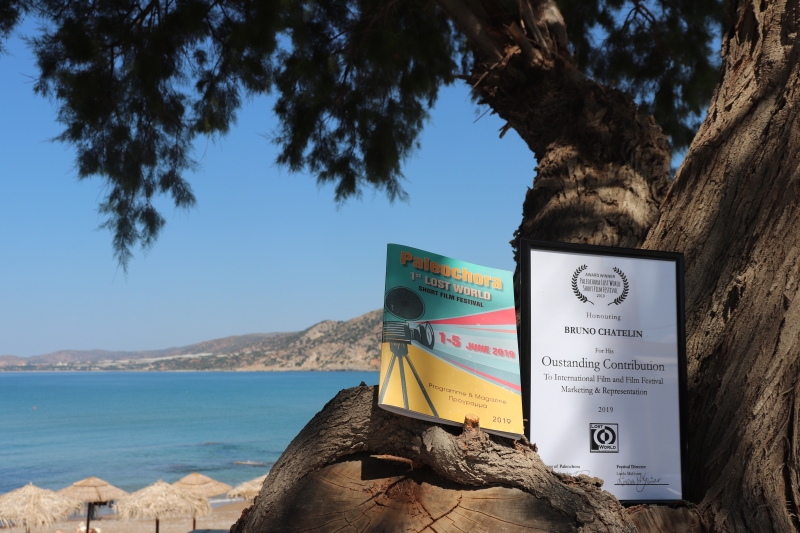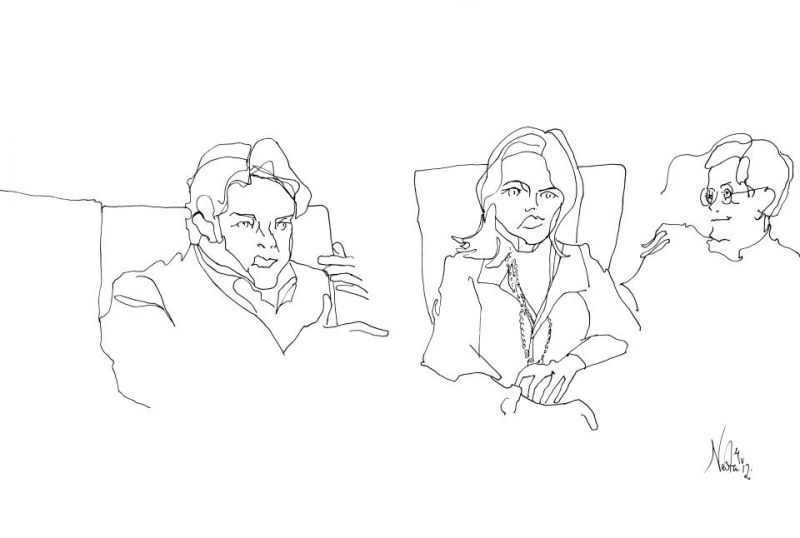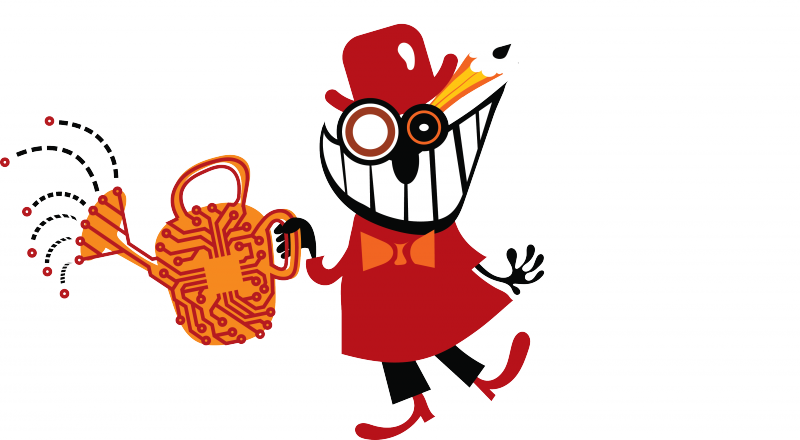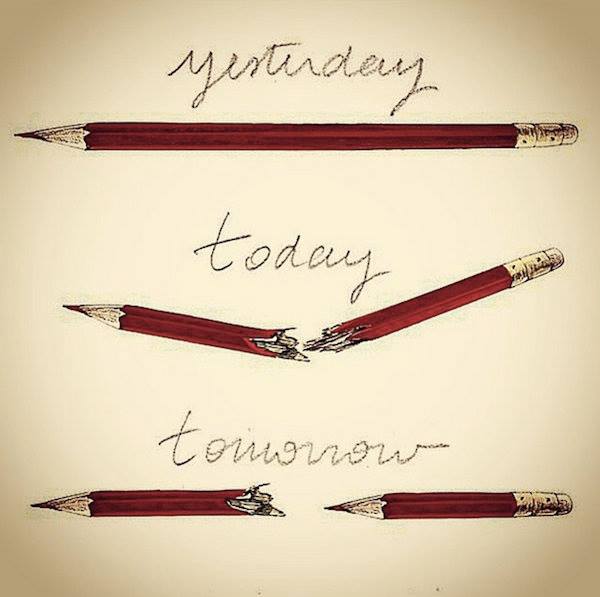|
|
||
|
Pro Tools
FILMFESTIVALS | 24/7 world wide coverageWelcome ! Enjoy the best of both worlds: Film & Festival News, exploring the best of the film festivals community. Launched in 1995, relentlessly connecting films to festivals, documenting and promoting festivals worldwide. Sorry for the disruptions we are working on the platform as of today. For collaboration, editorial contributions, or publicity, please send us an email here. User loginActive Members |
Editor
THE NEWSLETTER REACHES 171 000 FILM PROFESSIONALS EACH WEEK (december 2023) .Share your news with us at press@filmfestivals.com to be featured. SUBSCRIBE to the e-newsletter.
MEET YOUR EDITOR Bruno Chatelin - Check some of his interviews. Board Member of many filmfestivals and regular partner of a few key film events such as Cannes Market, AFM, Venice Production Bridge, Tallinn Industry and Festival...Check our recent partners. The news in French I English This content and related intellectual property cannot be reproduced without prior consent.  Seriously Hilarious: The Last Laugh Illuminates The Links Between Laughter & Survival
What’s your favorite Holocaust joke? Don’t have one yet? Then you should see The Last Laugh which premiered to a standing ovation at last year’s Tribeca Film Festival and became an audience favorite at more than 60 fests throughout North America and around the world. The film opened theatrically in NYC March 3, followed by Toronto March 10 and LA March 17, before rolling out in a limited U.S. & North American release. It took Director – Writer – DP – Editor Ferne Pearlstein over 20 years to take the project from concept to completion. Ferne’s original inspiration came after she read her friend Kent Kirshenbaum’s 40-page paper The Last Laugh: Humor and the Holocaust, while he was in school getting his Ph.D. and she pursued her Masters in Documentary Film at Stanford University. Kirshenbaum urged her to make a film on the subject – that was in 1993. It wasn’t easy to even make a film pairing comedy and the Holocaust. What movie investor would be crazy enough to take a chance on a project dealing with the most taboo of subjects? One that might very well end up considered offensive to the memory of the tragic deaths of 6 million innocent people… and also lose a bundle in the process? We’ll probably never know because the person, who finally put up the money in 2011, insisted on remaining anonymous. Even more difficult: producing a great film covering such controversial, complicated and risky material that is both entertaining and substantive. With the support of a cadre of highly dedicated pros, expert in all aspects of the business, from development through production through distribution, Pearlstein & Co-Writer/Co-Producer/Spouse Bob Edwards have done just that. The Last Laugh is a superb piece of filmmaking (actually shot with film – Super 16mm!) suffused with laughter (mostly Black Humor, biting, scathing but often gut wrenching & belly laugh funny) while simultaneously pursuing a serious intellectual and emotional examination of the interplay of the language of Humor with the indomitable nature of the human spirit and our age old/ongoing confrontations with survival, tragedy, evil, love, power… the downright absurdity of Death… lining up our next gig, covering your ass, the old in & out… don’t have time to laugh… What’s there to laugh about anyway? This is serious stuff – definitely don’t want to look like you’re enjoying things too much, possibly an illegal smile…
But the film’s dynamic direction derives from Pearstein’s deft Documentary Vérité structural backbone which details the lives of an incredibly inspiring Survivor family (first and second generation) – 92 years young Renee Firestone (interned at Auschwitz – probably the most notorious & deadly, in total murders, of the Death Camps) and daughter Klara who act as guides to the 1G & 2G Survivor communities adding Renee’s recounted experiences of the camps, both throwing in a fair amount of consult time as ‘joke critics’ too. The Last Laugh works on multiple levels simultaneously, smoothly weaving in several threads, stitching together an on screen dialectic – in point/counterpoint fashion, of a few dozen 1G/2G survivors, comedians, Humor savants, experts on Jewish culture & media, classic comedy scenes from television, club routines and last century film archives – into a mosaic of serious discourse focusing essentially on five semi – specific subject areas: … Survival with a capital “S”: Everyone who made it out of that hell, was part of the Survivor community and the obligation was to love, eat well, have fun… get loaded at Bar Mitzvahs & weddings – otherwise Hitler got the last laugh – (Roz Weinman); To Survive – There can be Humor in that – (Rob Reiner) and Survivors have some of the worst gallows Humor, ever – (Klara Firestone)… The final refrain from a song performed by internees at a cabaret in a transit camp: “We’ll laugh on the ruins of the Ghetto one day.” — Humor kept me going after the Holocaust. Without Humor I don’t think I would have lived this long. – (Renee Firestone). … The Power & Functionality of Humor: as a weapon, as a tool to achieve catharsis & relief, or psychological survival when subjected to unbearable BS and no way out, as an alternative to too many tears, It takes a lot to laugh/It takes a train to cry – (Bob Dylan); Whoever has cried enough – Laughs (Heinrich Mann). Comedy can be used to take revenge against tyranny, usually aspirationally as a coping mechanism, but sometimes literally with surprisingly notable effect. Humor: the only thing the Nazi’s don’t understand… They don’t understand life either – (Renee Firestone); People in extreme authority, pompous, arrogant – they are ripe to satirize – (David Steinberg); our commanders in the army… we can make jokes about but they don’t need to make jokes about us. – (Etgar Keret). We hear a recording from 1941: “Humor is the only weapon in the Ghetto… they even made jokes about the Typhus epidemic”… Comics are the ones who (can) point out the absurdity – who else is going to point it out! – (Lisa Lampanelli). And then there’s Catharsis, Humor being one of the most powerful and least painful means of achieving such psychic relief. Scholars examining the original roots of humor have postulated that small groups of cavemen hunters laughed out of relief, at times when a wooly mammoth or saber tooth tiger got the upper hand mauling or even eating one of the hunters alive, since it didn’t happen to them – once they were out of danger, of course. Go forward several thousand years and Mel Brooks still laughs at the fat lady falling on her ass after tripping on a banana peel…
Brooks talks about starting out in the late 40’s, making Hitler and Nazi jokes in the Catskills, characterizing it as: revenge through ridicule… having the borscht belt crowd in stitches over things that were not really funny; It’s much more fun to laugh than not to laugh, – (Carl Reiner). We see a clip from SNL less than two weeks after 9/11, with the city & nation still in shock and mourning. Who else but Rudy Giuliani, with what may have been his only really decent joke in two terms as mayor, delivers the line that breaks the Humor paralysis, thus bringing catharsis to a creative community wondering whether they were allowed to be funny yet – and it was the bomb! … Taboos, Crossing The Line/Boundaries & Freedom of Speech on the broader level: in language usage,Timing in a societal/historical sense, individual‘s rights to speak, off limit areas to talk about in the public arena; OK, maybe we CAN talk about it. But we can’t joke about it! – (George Carlin); Censorship makes the taboo even more taboo – (Sarah Silverman)… When is it not “too soon” for Holocaust or 9/11 or even Tsunami jokes? Time makes a difference. Nobody cares if you do Inquisition jokes. – (Susie Essman); It’s OK to make fun of Nazis, but not THE Holocaust since satirizing tyrants & their henchmen is far different than Humor at the expense of their victims. … The Art of Joke making (a master course in comedy is stuffed into the film): How, When, Where & Where Not, Why & Why Not to tell one and Who should & shouldn’t do a particular joke/story and What in general; The stakes rise with the bigger risk; if you’re going to joke about a ‘taboo’ subject, it better be a VERY good joke – (Harry Shearer); We weren’t trying to make a comedy. We were making a film about comedy. Ferne has made a film about bad taste in a tasteful way. Which is not easy to do. – (Bob Edwards). It’s all timing, of course. They say that tragedy plus time equals comedy. I say, why wait – (Gilbert Gottfried). One wonders how much time will need to pass before audiences will be ready for a musical comedy about Donald Trump. Those first four are usually interdependent in some degree, often co-dependent and occasionally subsumed completely into greater existential issues of life on earth. Implicit in the film’s dialectic is the matter of the nature and evolution of comic content in a globally wired interconnected world inevitably morphing away from tribal, ethnic, national, religious, sexual and traditional ideological homogeneity – despite all the current acting out of Trumpish and right wing European “Populists,” Islamcists, left wing quasi Communists and two-bit second & third world modern Feudalists. Forget “Political Correctness” – a nearly meaningless expression from the moment coined – almost all historical stereotypes no longer function enough to joke about. The Last Laugh would serve well as one volume in an audio-visual encyclopedia of world comedy. But make no mistake about it. … The Last Laugh is definitively a HOLOCAUST FILM and the Shoah was not used as a Maguffin.The Unsinkable Renee Firestone assures that (as well as something even deeper that is going on beneath the surface of this film).The three other major on-screen survivors and the seven 2G talents whose presence informed the piece further cement the fact. Robert Clary is a survivor, twelve members of his family weren’t, who as a teenaged boy performed in the camps. He later starred in the 1960s situation comedy Hogan’s Heroes (1965-71) about Allied POWs in a Nazi prison camp. Abraham Foxman, longtime president of the Anti-Defamation League, a bulwark against anti-Semitism in America, survived the Holocaust because his parents gave him away to be raised by non-Jews. Elly Gross also survived Auschwitz, but sees nothing at all funny about the death camps. She remains unwavering in her opinion that it’s never acceptable to use Humor, in connection to the Holocaust, despite Renee Firestone’s best efforts to convince her otherwise as the two women ride in a Gondola through an indoor canal, flowing through a simulated version of Venice surrounded by a shopping mall, serenaded by a Gondolier doing a half decent version of “O Solo Mio” within the Venetian hotel in Las Vegas. Despite the scene’s strangely surreal imagery and the overall schlockiness of the mise en scene, the subtlety of Pearlstein’s Vérité profile of Firestone and Renee’s own strength of character and sincerity, drives the film’s Humor/Survival discourse in a more serious direction encompassing the sadness, that always remains with survivors who have lost so much of their past. By a strange historical coincidence, the first linkage of Jews and the word “ghetto,” has been ascribed to Venice in the year 1516. Gross also provides clear proof that not all Jews have a good sense of humor – debunking an age-old myth. Add in a segment shot in a small ballroom at that same hotel, populated by the other attendees of the Survivors Gathering – extras essentially – that brought Renee and Elly to Vegas and that’s a goodly number of people literally touched by the Holocaust. In conjunction with the varying perspectives and life experiences of the first gen survivors featured, the 2G subjects completed an exceedingly authentic well-chosen sample group of stakeholders for examining the role of Humor in the overall Holocaust Survivor Gestalt. Six of them also brought direct career expertise, from their work lives in Humor and media creation that contributed integrally to the broader issues taken up in the film: Harry Shearer is an actor, writer, and satirist and one of the few people who have seen Jerry Lewis’ controversial unreleased 1972 Holocaust film The Day the Clown Cried. Shearer describes this uneven often maudlin film as: a Tijuana velvet clown painting of the Holocaust. Hanala Sagal was a writer and co-executive producer on 2016 film festival fave Elvis & Nixon and the author of the memoir My Parents Went Through the Holocaust and All I Got Was this Lousy T-Shirt. Sagal also connected Pearlstein to the Firestones, a perfect choice – almost as if she had serious A-List pull with Survivor Central Casting. Israeli satirical author Etgar Keret’s work draws heavily on his survivor parents as does monologist and performer Jake Ehrenreich who mined growing up as a child of survivors to create his one-man show A Jew Grows in Brooklyn – he’s also a known expert on Catskills comedy & the Holocaust. Comedian & monologist Deb Filler’s father was a survivor who settled in New Zealand, part of a tiny Down Under Jewish Diaspora population. Roz Weinman, the former head of Standards and Practices for NBC, during the Seinfeld (1989-98) years, allowed the ‘Soup Nazi’ to exist on network TV. She contributed significantly to the film’s examination of ‘Taboos’ and censorship. The seventh, Klara Firestone, a psychotherapist by trade and the founder of the Los Angeles’ support group for the children of survivors (2GLA) proved indispensible to the project in numerous ways. The Last Laugh also brings to the screen perhaps a minute of never before seen footage from The Day the Clown Cried and rare archival material, courtesy Aaron Breitbart (Head researcher at the Museum of Tolerance in Los Angeles); of captured Nazi film showing cabarets in concentration camps. Breitbart characterizes the Humor at the camps as: The kind that will make you cry. Its underpinning is sadness. But as Edwards said, The Last Laugh is a film about comedy – with an impressive assemblage of a minion & a half of virtually perfect interviewees accompanied by about two dozen of the most classic, rare and funniest clips from routines, comedians,TV shows and movies. Credited fresh interviews include three certifiable comic legends (Mel Brooks and his partner in crime, Carl Reiner from way back on Sid Caesar’s Show of Shows (1950-54) and Carl’s son Rob Reiner, who appeared on the irreverent Smothers Brothers Comedy Hour (1967-70 ) in the 60’s and became a household name from his role on TV taboo busting All in the Family (1971-79 ); six top comics known for work which deals with the film’s main issues: Susie Essman – who plays outrageous Susie Greene on Larry David’s Curb Your Enthusiasm (2000- ), Jeffrey Ross – noted for his “too soon” jokes including numerous Holocaust references, Gilbert Gottfried – whose shtick is making jokes in very bad taste and was fired as the voice of the Aflac duck after making taboo tweets about the devastating tsunami that hit Japan in 2011, Judy Gold – lesbian comedian and a self-proclaimed obsessive on the subject of the Holocaust, Lisa Lampanelli – known as an “insult comic” and the “Queen of Mean,” who thinks nothing is off-limits for comedy and David Cross – famous for several satirical public readings of the screenplay of The Day the Clown Cried until Lewis’ lawyers shut them down with a cease-and-desist order; three comic genius writer-director-producers: Alan Zweibel – A producer, director, playwright, and veteran comedy writer who began his career on the original Saturday Night Live (1975- ), particularly writing for Gilda Radner and continues to be at the forefront of contemporary comedy, working with people such as Larry David, Lisa Lampanelli and Billy Crystal; Larry Charles – Writer/director at the forefront of present day taboo-breaking comedy as a veteran of the Seinfeld writing staff, Curb Your Enthusiasm and director of three Sacha Baron Cohen features (Borat – 2006,Bruno – 2009, and The Dictator – 2012) as well as Bill Maher’s documentaryReligulous – 2008) and David Steinberg – one of the most well-regarded comedy directors and writers of his generation, who first made his name as a stand-up on way too many talk shows and his controversial comedy “sermons” on The Smothers Brothers Comedy Hour. Rounding out this superb Humor expert ensemble: Bleeding edge comedy force of nature and freedom of speech activist Sarah Silverman and Shalom Auslander – novelist and writer whose works draw on his ultra-Orthodox Jewish upbringing. His book Hope: A Tragedy, which portrays Anne Frank as a bitter 95-year-old woman still stuck in an attic trying to finish her second book, started what has recently become open season on Anne Frank in the comedy world. In a Hollywood movie, from the book, that will never be made, a specially made up Patty Duke would be the perfect one to play Frank and adding a character not in the book and thus. a starring role for some up & coming actress as Anne’s literary agent – Helen Keller. Then there was the matter of Writing the Story. ‘Writing’ for documentary has such an amorphous meaning & terms a wildly wide-ranging process, this film’s story/scripting/outlining/scribing was replete with Zen synchronicities – starts & stops, Vérité, survivors, stars, extensive research, a wide range of archival material, a real gondola in a fake canal, amazing as well as convoluted stories, controversial subject matter and 20 years of sheer determination. Fortunately Ferne and Bob both have graduate degrees from Stanford’s prestigious Documentary program and thus are as talented intellectually as cinematically – (interestingly, their romance started at the Sundance FF, not at Stanford) – so they weren’t intimidated by all the research or the scholarly and structural scripting challenges, nor were they in it for a quick buck. Here’s Pearlstein & Edwards summing up how they pulled it all off: Pearlstein: I wrote my first proposal in 1998 after meeting Robert right as Life Is Beautiful (1997) came out. It was clear right away, after the strong reactions to that film, that it would serve us better to wait to make our film because Life Is Beautiful was such a seminal part of our discussion that we felt it needed to settle before we tackled this difficult topic. Over time, there has been more use of comedy or satire in relation to difficult subjects but It wasn’t until I saw the documentary, The Aristocrats in 2005, and where I saw the first jokes about 9/11, that I felt people were ready to see my film. Partially that was the result of spending so much time — years really, thinking about the project and writing outlines and proposals before we ever began production. I was very adamant that I didn’t want this to just be a talking heads-and-clips film. I always wanted to interweave a Cinema Vérité thread with interviews and archival, which function sort of like a Greek chorus. On paper that worked fine, but in practice, it was much harder to strike the right balance. So the real challenge was weaving those two stylistic threads together and making them feel like one seamless film. Another challenge was staying within that vision while keeping up with current events. With each new shoot, year after year, more taboos were being broken: from rape jokes by Daniel Tosh to jokes about Bill Cosby, to Charlie Hebdo, to the arrest of the anti-Semitic French comic Dieudonne in the wake of those attacks in Paris. I am going to let Robert pick it up from here. I just want to state the fact that he is a brilliant writer. I am a good writer, but only when it’s something I’m good at writing! I always know what I want to say, but I can’t always find the way to say it myself. Robert is the perfect partner for me because I can hash it out with him and completely trust him to write it up beautifully – so it works for us! Edwards: I think Ferne pretty much covered this with her comment about how brilliant I am. Seriously, the “writing” part of the documentary was in the meticulous planning for what we wanted to film and how Ferne saw these elements coming together to fulfill the vision she had for this film. Obviously, you don’t “write” a documentary in the same way that you write a script for a narrative film. But we “wrote” it in the sense of spending a lot of time and energy thinking about the story we wanted to tell, and how to tell it, and what the pieces would be that we needed, and how they would all fit together. Then we went out and got those pieces. (Also, as part of that, there is a lot of actual “writing” of treatments and proposals for funding etc., which sort of codifies that thought process). You have to be adaptable of course, but having that master plan was critical; otherwise, you’re just floundering, grabbing things. And since we were editing and shooting simultaneously over a period of five years—we’d shoot a little, cut it together and think about what we needed next, and so forth—that was an organic, ever-evolving process. At a certain point, writing and editing become intertwined. With The Last Laugh and also with Ferne’s previous feature doc, Sumo East and West(2003), we were pleasantly surprised when we finished the films and then went back and looked at our original treatments and saw how closely the final cut matched what we originally set out to do. That’s a good object lesson I think, and an argument for rigorous strategizing and planning before you go out and shoot. Yes, a documentary is a largely improvisatory endeavor. But you really can control what you’re doing and the shape of the film you’re making if you invest a lot of time and effort into planning beforehand. Still, they could plan all they wanted but, in order to execute the plan, they HAD to get Mel Brooks, Joan Rivers, Sara Silverman…
Sarah Silverman just KILLED it in the film! How did you get her to agree to appear? Pearlstein: The fact is, we knew we could not make this film without Mel Brooks and Sarah Silverman, so in those cases especially we had to keep finding new and creative ways to approach and re-approach them until they agreed. But Sarah Silverman was actually the hardest person to get a yes from. In the end, Mel Brooks personally helped us get Sarah by sending her a clip from the film (his interview, crosscut with her appearance at his AFI Life Achievement Tribute) along with an email encouraging her to do our documentary. It said something like: “I don’t do much but I felt like this was worth doing and I did it. I’m not gonna tell you what to do but…” And yada yada yada… She did it! Edwards: She’s one of the most articulate comedians, both in her act and intellectually – like Brooks, she was essential… a ferocious free speech advocate, a purist – there’s no line.
Brooks without question anchors the film’s credibility and authority of expertise on comic theory and Nazi Humor (they had none) from the Nazi jokes he told in the Catskills in the late 1940’s to The Producers (1967): Hitler is the guy who made me money, so I stay with him. He weighs in cogently on all the major topics discussed from timing – a musical comedy about the Inquisition wouldn’t have worked in 1492; to survival, to battling censorship – he lost on The Producers title – theoriginal title was Springtime For Hitler, but they said they couldn’t put that on a marquee! Landing Brooks brought several minutes of great clips, for Ferne to cut in, as well. Pearlstein: Mel Brooks took a few years, a few very close connections, and a lot of luck to get him to finally agree. Ultimately it was through Anne Hubbell (co-founder of Tangerine Entertainment, a groundbreaking production company focusing exclusively on films by women directors and also Vice President of Motion Picture & Consumer Films at Eastman Kodak). We’ve known each other for years because of our relationship through Kodak. Since the early days of talking about this project, I would run into Anne at Kodak events and she would say, “My partner [Amy Hobby] and I are going to produce your film!” And I would just smile politely and we’d have another drink. And then I would see her again at another event and she would say: “I’m telling you, we are going to produce your movie!” And then the next thing I knew, she and Amy helped us secure our interview with Mel Brooks, and she was right: they became producers on my film! Nailing down the rest of such a fairly large cast (about half of whom were recruited due to their one of a kind specialties/backgrounds), took a lot of effort too – almost every one of the comics & humorists said no to the first request.The breakthrough came when Rob Reiner agreed to appear in the film: Pearlstein (from an interview with No Film School): “Rob Reiner brought so much respect to the project because everybody loves him. Once he said, Oh, this is fine to do, others were willing to jump on board. We interviewed at least 30 people.” Tragically, Pearlstein didn’t get a chance to interview Joan Rivers for the film but she worked hard to ensure that her presence was felt. She told Deadline: Pearlstein: “Joan Rivers actually was one of the first people to say yes… but she was always so busy — sadly, she finally gave us a date and it was two weeks after she passed away. But we still really wanted her to be a part of it, and we did, as in the film she and Abe Foxman sort of spar from beyond the grave”… — in a couple of perfectly selected archival clips… Then there’s Renee Firestone whose vérité story runs parallel to Pearlstein’s Greek chorus of interviews. With the Firestones, Ferne had the good fortune to film a very strong pair of subjects. Pearlstein (from the interview with No Film School: “I had been researching for years for people to talk to, and one of them was Hanala Sagal, who was one of the writers of Elvis & Nixon. I told her I was looking for a survivor who thinks it’s okay to laugh, but I’m also looking for a survivor that says it’s not okay to laugh. I was also interested in the second generation because there’s this whole wealth of dark humor they only tell amongst themselves and their parents. She found the perfect two people: Renee Firestone and her daughter Klara.Their dynamic was great and funny, and Renee was very willing to talk and think about these things. It was clear she had a very good sense of humor.” And a hell of a lot to say, to go along with a quite charming screen presence, resulting in a character profile stylistically reminiscent of Al Maysles’ sparkling Iris (2015) accompanied by a powerful message that transcends Renee’s Incredibly unique Off-Hollywood survivor story. Renee Firestone survived Auschwitz but the rest of her family was murdered. Her sister was experimented on by the Nazis before they killed her. Yet, Renee retained the ability to laugh, to appreciate a good joke, to love – she had a post-war storybook romance with her now deceased husband (also a survivor) – and to keep fighting for truth and justice. For several decades, she has spoken to groups, around the world, raising awareness not only about her own & the Jewish experience but about other relatively recent acts of genocide and some that are currently occurring. We hear from her about the camps – the prevalence of Humor which functioned as a way to stay mentally strong (she describes imaginary dinner parties they would discuss and at the end of the event they would say – Now you know this will never happen), or to get back at the SS guards and poke fun at the Nazis… the cabaret productions with subversive messages of resistance hidden in the lyrics… Nazi medical care – her bizarre initial examination at the camp, (Our treatment was so ridiculous that you either had to cry or laugh about it) and her confrontation 53 years later with one of the doctors who conducted experiments on her sister – how gutsy was that? Firestone passionately argues that genocide is a threat to all people; Holocausts are going on Right Now… It took 12 years to kill 6 million Jews. In Rhwanda, they (the Hutu) killed a million Tutsis (and a lot of moderate live & let live Hutu) in 4 months. And this is after the Holocaust when we keep saying ‘Never Again’ – so that’s where we are… Silverman forcefully weighs in on this issue, in the film, herself: [there’s a] fear in people (especially among Jews) that the Holocaust will be forgotten. Has it not been forgotten? There are genocides all over the world happening… but not happening to Jews. Hold that thought as you watch her doing a Holocaust routine and see how she takes that last point and turns it into one of the most biting punch lines you will ever hear. Quite importantly, what emerges from Pearlstein’s documentation of Renee’s activist activities is an appreciation of the advanced approach and unanticipated angle of attack Firestone advocates taking toward the “Never Again” argument. It’s amazing that an aged Jewish Auschwitz survivor, could be so adamant about assigning as much of her attention, as well as appreciating and ascribing the same amount, of value to the anguish & atrocities, non-Jews have suffered from cases of genocide around the planet. Almost anyone and I’d guess Pearlstein & Edwards, among them would not have expected Renee to “share” her Holocaust pain so amply. Then again, Stanford, MA alumni almost always allocate appropriate background research and analysis and accordingly would be aware that the word “genocide” came as a late arrival to the vocabulary of mass murder and assigned its place only in 1944 by Raphael Lemkin, a Polish-Jewish Attorney who escaped the Nazis annexation of Poland and arrived in the United States in 1941. As a boy, Lemkin had been aghast when he learned of the Turkish massacre of hundreds of thousands of Armenians during World War I. As an adult, he came up with a term to describe Nazi crimes against European Jews during World War II, and enabled that term into the world of international law as an attempt at preventing and punishing such awful crimes against innocent people; coining the term “genocide” by combining genos, the Greek word for race or tribe, with the Latin suffix cide (“to kill”). Naturally, the writing team would have been aware that the term Holocaust, as related to mass extermination, dated back to the 13th Century and the usage of Shoah first appears in the Old Testament. At any rate, Ferne just rolled with it and absorbed the additional intellectual assets and activity, in a classic vérité way, enhancing the value and range of the The Last Laugh’s examination. The famous Jewish Humorist, Sholem Aleichem (1859-1916 – credited with the original story for Fiddler On The Roof among a vast body of work), is said to have told a story about a Jew, from the incredibly poor Russian village of Anatevka, who secures a short meeting with God to ask an important question of Life & Death. Is it true that we Jews are really ‘The Chosen People’ he posed to the Supreme Being? When answered in the affirmative he said, Well maybe next time you could choose someone else! So maybe Jehovah finally spread the wealth in the 20th Century – arguably the most advanced period of humanity’s first sentient/sapient 10 or 11 millennia. Here’s a representative list of several statistically significant genocides, holocausts (by historical usage derived from middle English meaning ‘burnt whole’ circa 1250 AD, before THE BIG one), ethnic cleansing, {race}exterminations, slaughter, ravages, Mass murders/ killings/homicide/execution, massacres, havoc, butchery, atrocities, carnage, destruction, annihilation, liquidation, elimination, eradication, decimation, and including newer accepted crimes of violence such as forced deportation, sterilization & systematic rape: 1. (1915-23) Armenians [0ttoman Empire] = 1 million + and including many Assyrians & Greeks 2. (1933-45) The Holocaust [Nazis] = 6 million Jews Plus 5 million Slavs, Roma [Gypsies], disabled, Jehovah’s Witnesses, homosexuals, and political and religious dissidents 3. (1975-79) Cambodia [Khmer Rouge] = 1.7-2 million estimated 4. (1990) Rwanda = Approximately 800,000 Tutsis and Hutu moderates 5. (1995) Bosnia [Serbs] = 100,000 Bosniaks & Croatian Civilians 6. (2003) Darfur [Sudanese Government] = 300,000 killed, 2 million displaced 7. ** (16th to 19th Centuries) Native Americans {North America/US territory} The Indians always seem to have asterisks next to them = 9 million + died from violent conflict or disease but this # doesn’t include Canada, Mexico or Central & South America- who knows how many that would bring the premature death toll up to. There were 10 million + estimated Native Americans living in, land that is now, the United States when European explorers first arrived in the 15th century. This dwindled to less than 300,000 estimated living in the United States around 1900. There were 5.2 million identified as American Indian or Alaska Native in the 2010 census – spread among approximately 500 tribes. With so many different tribes you can imagine how difficult it was to make Indian jokes (back when we were allowed to make ethnic jokes) that audiences could get. I do have one though to give you an example – very rare: “What did the South Western US Indian say when he saw his first pizza?” (you say what?) “Who threw up on the fried bread?” It’s just a food joke for crissakes! Any Native American, who voted for The Donald, would be fine with it. I know another good one that involves potatoes, white westerners and cannibals. Everyone I’ve met from Africa seems to know it. All you have to do is tell them the punch line or the setup. There are a number of other likely genocides that apparently have definitional, jurisdictional, financial or political conflict of interest problems or the victims are boring, ugly or just unlikable, for example: Libya, Guatemala, Nigeria, Uganda, Dominica, Congo et.al. I could make a case for Old Hippies… OR take Syria – please! Which one of you readers would like to explain to your Syrian friends or colleagues about the 400,000 dead & as many maimed (most of them innocent civilians when the thing started) that it’s tragic but it doesn’t really measure up to THE Holocaust. Go to Aleppo and do it – substitute Armenians if there aren’t any Kardashians around. We can also look forward to the time when the Syrian majority finally ousts Assad or his successor and exterminates the remaining Alawites for revenge, thus relegating one more old testament reference to the footnotes. SO, there’s plenty to go around. We Jews should follow Firestone’s example and share the glory! We don’t need to hold the record forever – doesn’t do much for me personally anyway. Besides the Native American’s new corrected stats show them at far higher totals, admittedly at a slower rate, but under those criteria, it’s the Rwandans that are the superstars. Kudos to Renee Firestone for fighting the good fight and the whole Last Laugh team for not letting the jokes get in the way of the survivor’s tragedy and the murky politics that come with trying to right unexplainable wrong. It would be so cool to to see Ferne & Renee, at the Oscars next year taking a few courtesy questions (at least nominees for Best Doc. aren’t likely to get busted by the Fashion Police) on the carpet, providing Corporate & Old Metaphorical Hollywood an opportunity to do some symbolic payback, for the industry’s inattention to the situation it had no idea was occurring at the end of the war. Anne Hubbell: (last April in the Observer): “Renee’s a total badass. For her, it was about finding the balance: reminding people of what actually happened as well as telling jokes and making fun of it in ways that were empowering.” You can’t die while you’re alive. It would have been a horrible life for me for 70 years, to just cry… Wherever there are survivors, any kind of survivor, they must have some humor, Firestone observes. And Renee has definitively had the last laugh on the Nazis: Could Hitler have imagined that I would have survived and have 3 great grandchildren – that’s my revenge! The GREEK CHORUS In truth, quite a few of the well-known comedy figures appearing on camera didn’t have an actual Holocaust joke in their repertoire, as Pearlstein quickly discovered when she began interviewing. Do you have a Holocaust joke? That was usually Ferne’s first question with the comedy people. They had Nazi jokes, Hitler jokes, Jewish jokes… but jokes about the Shoah? Well, uhhh… Brooks didn’t have one, the two Reiners didn’t either, nor did Steinberg, Shearer, Zwiebel (Zweibel did have some that he told to musicians and the like who worked at the Catskills hotels, where he started out writing jokes for older comics, but he never had them repeated to the public) or even Charles although he did write a whole Survivor scene with Larry David and all the riotous ethnic bad taste in the three Sacha Baron Cohen features. Shalom Auslander and Hanala Sagal, of course, have written entire books that are essentially extended Holocaust jokes. They all contributed comic wisdom on boundaries, the survivor experience and other insights on use of Humor. But don’t worry there are plenty of Holocaust jokes per se – which actually is the Maguffin to propel the main thread of examination on where, why, when & how to draw THE LINE if such a thing does or should exist. Judy Gold, when asked said, Oh, I have a Holocaust joke. And she did – you can hear it the long trailer version. Lisa Lampenelli had a bad one. Gilbert Gottfried had a few while being generally go-to funny throughout for Pearlstein’s editing on the beats of her Greek chorus. Aflac lost a real talented duck voice when they fired him although it’s possible they took a bath on claims from the Tsunami and his tweets exacerbated an already bad corporate mood.
Joan Rivers archival brought the classic Heidi Klum quip delivered at the right place at the right time with perfect timing & a second hastily written Holocaust joke on The Tonight Show that made Mel Brooks cringe. Personally, I think it just didn’t work since carburetor jokes are hard to pull off. Sarah Silverman is a virtual cottage industry of Holocaust Humor. She delivered one at her introduction of Brooks when he received his AFI lifetime award in 2014, which I’ll repeat since it’s so widely quoted and easy to remember: “What do the Jews hate most about the Holocaust? The cost.” Brooks’s reaction to Silverman delivering that line: I couldn’t believe it… I did laugh though, maybe the time has come for that joke – but he makes it clear it never would have worked 25 years ago! That episode perfectly illustrates the generational gap from Brooks’ era and the much lower 21st century bar or from a different perspective, ‘extended boundaries’ and sets the stage for The Last Laugh’s broader look at comic Taboos. Concurrently it further demonstrates Brook’s & older comics drawing a line stopping at Nazis and staying away from Gas/Ovens. Interestingly it would seem that the female comics cross the old barriers on a regular basis. As Ann Hubbell noted in the piece the Observer did on the movie’s premiere: … “in interviews that we did and jokes we listened to… the women go the furthest. Joan Rivers and Silverman say things that are more outrageous and funnier because they have to be. Their stuff puts it out there in a way that most of the men in the movie don’t and I wonder: is it because they have to do that because they are women in comedy? They cross lines for people far more than Mel Brooks. Mel in the movie will go after the Nazis but he won’t make a Holocaust joke. Nothing was off limits for Joan. She was telling abortion jokes in the 60s.” So, what can & cannot be joked about, where should comedy draw the line? What constitutes bad taste or inappropriate material? What still has shock or hot-button value and what topics are truly taboo to joke about today? 9/11… The Holocaust? Jews and Nazis seem to be OK now but… Do not make fun of Mohammed. That’s truly taboo, according to Larry Charles – Because if you do, there’s a chance someone’s gonna throw a bomb through your window! It’s a true taboo when there are consequences as a result. When people just laugh and go back to what they were doing, that’s not really taboo… controversial, provocative maybe, but still socially acceptable. As long as the powers that be let us do it – it means we haven’t transgressed. Charles says, he has NO LINE but works on a case by case basis… as he keeps his eye on culture shifts – It’s subjects that are seemingly inappropriate for comedy. That’s the place that’s most interesting to explore. If you find Humor that’s not Really Funny at the time, you are mining material that’s kind of fresh. LGBT+Q & ethnic jokes are not necessarily taboo but are out of fashion & certainly not PC. The B’S in LGBT could be a growth area, TG/TS/TV not so much. The issue of who can tell jokes to what audiences is raised in the film: Charles points out the trouble you can run into transgressing upon a specific group’s turf: whites working to black crowds or blacks talking about white people, non-Jews & Holocaust jokes, educated coastal liberal/progressives vs. middle/rural/southern America Trump supporters… We see Lampanelli telling her infamous David Hasselhoff Holocaust joke at a roast of the TV actor, who is also a popular singer in Germany: David Hasselhoff’s music is so bad that had it been played at Auschwitz the Jews would have sprinted for those ovens. Renee Firestone watching the routine on YouTube gives it a definite thumbs down. Thus, proving that non-Jews shouldn’t tell Holocaust jokes? Not Necessarily – it was just a poor wording of bad taste comedy. If she had said, “even the Nazis would have sprinted for those ovens” – no problem. Compare that example to Chris Rock’s very biting but quite funny Jews/white people quip in the film. As Shearer says: A great joke trumps all rules – you’re ashamed you’re laughing but it’s so funny, you can’t help yourself! What about child molesters? – covered in the film, by the way. Mexicans are always good! Depends a lot, on where you’re telling it though. There’s an Amy Schumer bit in the film from a gringo angle. A few years ago, I came up with a name for a band called “The Running Mexicans” – people got it in most of NYC. On the west coast & around Trump Tower “The Drug Running Mexicans” would be a better way to go. Terrorists? Immigrants – Illegal or otherwise? (Trump’s policies will probably destroy the market here) Opiod addiction? Disabled people? Geeks? Fat people? (small)Body Parts? The Lying Media? Scientologists? Or even Scientologist terrorist drug-crazed fat disabled illegal immigrants with small hands… Lenny Bruce would still have a field day! Deregulator jokes? – very timely… OR consider this: Why aren’t there any Wal Marts in Afghanistan? This is a joke I like to to tell to NYC police on patrol or schmoozing in front of the station cause they’re cooler than the average cop & way underpaid for the responsibilities & dangers they face (class war union thing) and it’s win-win to cheer them up while I practice telling it different ways. The punch line to the aforementioned question actually appears in The Last Laugh in the form of Chris Rock’s classic taboo breaking 9/11 routine about the replacement Freedom Tower now at Ground Zero and who’s the sponsor? So, when you see the film you’ll get two jokes for the price of one. Cool, huh? How about bulldozing over sacred Native American land (which should hit the National news when we’re building the stupid WALL & construction is ready to start on the 62 mile stretch of Indian land that extends into both the U.S. and Mexico). The ‘alleged Holocaust’ was a joke (courtesy Silverman) – some people don’t get that (with so much ‘fake news’ emerging these days that kind of reaction may become more and more common). We are talking about another, somewhat negative, strain of Humor here. One that thrives much more in times of political turmoil, polarization and war. What Silverman refers to as “blood laughs” & Charles describes as Taboo jokes that purge catharsis and tap that dark part of the psyche. Ross: There’s no subtlety to the Holocaust. The deeper you go, the more revengeful it is. Those jokes were the Jews’ way of getting through it. Counter that with Abraham Foxman, president of the Anti-Defamation League, his job being to fight anti-Semitism: I understand why we’re laughing – why are they laughing? What are they laughing at? They’re not laughing at the prejudice – they’re applauding it! And Clary explaining how he figured out why the SS guards at the camp were so eager to go see the cabaret shows: They had such a terrible life beating & killing us, that they just wanted to be entertained. In a decade or two, we will probably be able to thank global warming and all the accompanying weather, geological and political/humanitarian disasters for providing the next mother lode of Humor material to the comics of the future – if we don’t destroy ourselves before the aliens or Mother Nature does. Harry Shearer opines on the importance of speaking out on life & death issues with Humor: Trying to be too serious about these challenges, in the wrong hands, can be even more dangerous than being funny about them. Despite their generational differences on the location of THE LINE, both Sarah Silverman & Mel Brooks are on the same page as far as the need for comedy to cross boundaries. Mel Brooks observes, Comics are the conscience of the people, and they’re allowed a wide berth in any direction… even if it’s in bad taste.
But what if they are NOT allowed that wide berth? Silverman is emphatic that: When speech gets censored, it’s dangerous – (even a Miss Hitler Beauty Pageant should be allowed) – Comedy puts light onto darkness, and darkness can’t live where there’s light and that’s why it’s important to talk about things that are taboo because otherwise they just stay in this dark place and they become dangerous. That danger could well be impending – not just to the Art of Comedy and Freedom of Speech but to the nature of and Pursuit of Truth itself and thus our ability for sane & positive interaction with Reality and Existence. Ostensibly addressing a particular genre/milieu of Humor and a specific rather dramatic event cycle in history, the film aspires to an even higher plane and perhaps the ultimate of stakes. Pearlstein & Edwards are not trying to offer definitive answers to these issues but rather to spur discussion and provoke debate. The Last Laugh somehow seems to be tapping into the collective unconscious and evolving intellectual atmosphere of the current times, particularly here in western society. BELOW THE LINE You addressed the challenges, both technically & with the shooting process in your use of the Super 16mm format in Filmmaker & No Film SCHOOL interviews last year.
Pearlstein: It wasn’t without its challenges. Kodak was going through some definite shake-ups and changes. Labs were closing, technicians that could service my very old camera were harder to find, the rental houses sometimes didn’t know what equipment and accessories to send. Even camera assistants that knew how to load magazines were hard to come by. (They existed, but when I had a shoot come together on a moment’s notice, the ACs who worked in film were often already booked up!) So there were definitely challenges. Pearlstein from Filmmaker: “I own my own camera (a used Aaton LTR that was so old, when she bought it 25 years ago, the serial number was in the double digits) but the infrastructure for Super 16mm was collapsing all around us and on my first shoot, when I went to rent my Super 16mm magazines as I had done many many times before, I quickly learned that there was so little demand for these mags that the rental house had taken them all apart for parts. At the eleventh hour I had to purchase four higher-end magazines from Aaton (in France!) just to have them downgrade them so we were able to work with my camera.” Pearlstein from No Film School: “I’ve been working as a cinematographer since I finished film school in 1993, and I’ve just always preferred to shoot in film. So shooting in film was definitely an aesthetic choice. But as a DP, it is also how I enjoy shooting a film. Especially with documentary, more so than narrative, I love that there’s a certain way you have to think when you shoot in film. You can’t just fire-hose the footage like you do when you’re shooting digitally. Also, overshooting can be a risk shooting digitally. With film especially, you have to think ahead; you have to plan for what you want and say. And as a director, I thrive on the challenge of working within the confines of a limited number of 10-minute rolls… Okay, for this I’m going to get it in two rolls. This, I only can afford to do one roll. There’s something about the challenge of getting what you want in that constraint that really gets me excited.” Do you intend to keep shooting in film in the future? Pearlstein: Will I be shooting in film again is a great question. But the fact is, when I see the film projected on the big screen, I can’t imagine not shooting my next project on film. On one very important scene the film looked great and was a far better choice than digital – a fairly long sequence at the very end of the documentary, in which Renee Firestone and her Brother in law reminisce about their lives before and after the Camps, sitting on chairs in the sand on Venice Beach (Venice Again!). Painful memories are wistfully expressed as Pearlstein shifts the mood from the regular bolts of Humor that characterized the film to that point, to plaintive respect for the loss survivors may overcome but never forget. Shooting on film allowed the camera to be concentrated on the subtle lines of expression on their faces rather than a compromise battle of iris, sun, sand, skin tones, contrast, foreground and background… the two get up to leave as sundown is approaching & the camera lens opens fully wide to a gorgeous vista of the whole beach scene, which at that moment fills the frame in a multi-color palette, captured beautifully by the film stock. Would it have come out so well in digital? I’m not sure but I wouldn’t bet on it. Unquestionably, The Last Laugh will be archived on at least one film print – still the best way. The Sound – As you are so dedicated to technical excellence and considering how important sound recording and post is, particularly in Documentary, what are the critical aspects of your overall approach to sound and specifically on this film, were there any unique challenges and how did you address them? Your strategy towards the sound from the two survivors and the singer on the gondola would be a solid scene to dissect. Pearlstein: Well, just like shooting in film, I am very old school when it comes to sound. A lot of documentary sound people these days do tons of reality TV, and prefer to just use radio mics and mix from the other room. But I still prefer the softer sound of the boom and I like to have the sound person booming alongside me as I film. There’s a dance to the DP/soundperson relationship that’s enjoyable to me when it works, which is why I always like to work with the same collaborators as much as possible. In fact, one of the most incredible stories about the film in general has to do with recording sound in the gondola scene in Las Vegas. My longtime friend and sound person Richard Fleming, who did most of the sound for our NY interviews, also came along with us to Vegas for the survivors’ convention that we filmed. My camera assistant and I were in the gondola on the fake indoor canal at the Venetian Hotel along with the two survivors we were filming. Richard radio-miked the two women and followed us on foot as closely as he could get, walking along the edge of the pedestrian walkway that ran parallel to the canal. It was a little risky because the sound environment was less than ideal to begin with, seeing as the canal ran through the center of a mall filled with shoppers, on top of being the largest indoor swimming pool you’ve ever seen. So it was noisy and boomy to say the least. The fact that he could even get a wireless signal in that environment was surprising. Anyway, Richard speedily walked along the edge following our boat. At one point during the interview, the gondolier started singing, “O Sole Mio” in Italian, and Renee on camera looked at Elly (the other survivor) and said, “This is such a beautiful song! Later I will tell you the story about this song.” And that was just before our second ride along the fake canal ended and we were letting Renee and Elly off the boat while my AC and I stayed onboard to shoot cutaways. While Renee and Elly we’re getting out, over his headphones Richard could hear the continuation of their conversation—the poignant story that is revealed at the end of the film about what that song “O Sole Mio” meant to Renee over the years. There was no time for him to share the significance of the song, only time to scream down to us to make sure we filmed the gondolier singing “O Sole Mio” again. I just assumed this was so I could intercut their interview with the song. Without giving away the ending of Renee’s story, it was his astute observation that helped us build on this connection and led to the decision of making “O Sole Mio” the theme of the film. That would never have happened if Richard and I didn’t have the history we have together, and if we weren’t working the way we were. Speaking with Filmmaker Magazine & Indiewire last April and again with Women and Hollywood this past January, Ferne said: “With The Last Laugh, I hope to provoke debate and discussion; to introduce these issues and stimulate a serious conversation about freedom of speech, our collective memory, and how to remember the past while keeping it vibrant.” I asked her to expand on that a bit considering current politics: I think dialogue is extremely important right now and I am very proud of how my film has contributed to that discussion. One of the main themes of The Last Laugh is satire’s power (or lack of power) to affect political change. That’s a big debate in the film and also one that I think is very much on people’s minds in general at the moment. We’re not trying to spoon feed the audience an answer, even if we felt we knew what that answer was; we’re just trying to encourage debate on the topic, because that is what is most productive, in my opinion. The only thing I personally feel very strongly about is that satire is much more powerful when it’s aimed at an aspect of the target that is significant, rather than just making fun of a politician’s appearance, for instance, which can just serve as a distraction or a normalizing influence. For satire to have any effect at all it has to really have teeth. In the Age of Trumph, such a dialogue is perhaps as pressing and relevant as in any period of modern history. As it takes its place within an extensive filmography, of Documentary & Narrative works about the Nazis’ era, The Last Laugh presents a uniquely distinct vision, of both the brutal impact of Fascist/Authoritarian history and the redemptive survival instincts of the human spirit that counters it. Or, to paraphrase Sarah Silverman, this is not your ordinary Holocaust memorial smackdown movie – It’s WOWauchwitz!
Courtesy Indie Film Reporter
|
LinksThe Bulletin Board > The Bulletin Board Blog Following News Interview with EFM (Berlin) Director
Interview with IFTA Chairman (AFM)
Interview with Cannes Marche du Film Director
Filmfestivals.com dailies live coverage from > Live from India
Useful links for the indies: > Big files transfer
+ SUBSCRIBE to the weekly Newsletter DealsUser imagesAbout Editor Chatelin Bruno Chatelin Bruno (Filmfestivals.com) The Editor's blog Be sure to update your festival listing and feed your profile to enjoy the promotion to our network and audience of 350.000. View my profile Send me a message The EditorUser pollsUser contributions |


